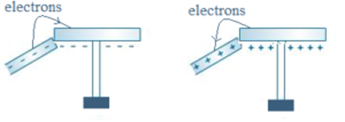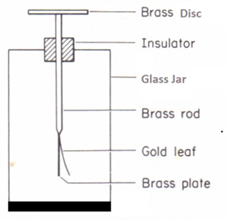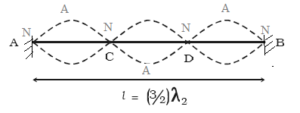Science > Physics > Magnetism > Magnetic Induction and Magnetic Potential at any Point In this article, we shall study to derive an expression for magnetic induction and magnetic potential at any point in a magnetic field created by a bar magnet. Magnetic Induction at Any Point Due to a Short Bar Magnet: Consider a […]
Category: Facts
Quantization of Electric Charge

Science > Physics > Electrostatics > Quantization of Electric Charge In this article, we shall study the concept of quantization of electric charge and the principle of conservation of electric charges. The fact that all observable charges are always some integral multiple of elementary charge e = 1.6 × 10-19 C is known as quantization […]

Science > Physics > Electrostatics > Charging a Body and Detection of Charge In this article, we shall study methods of charging of body and different apparatus used for detection of charge on the body. Charging of Body: Charging by Friction: When a body is rubbed to another, there is a transfer of electrons from […]
Vibration of String

Science > Physics > Stationary Waves > Vibration of String In this article, we shall study different modes of vibrations of string, the expression for its fundamental frequency of vibration. Concept of Overtones: Whenever a string or an air column is set into vibrations, the vibrations consist of the fundamental frequency accompanied by certain higher […]
Sonometer Experiment

Science > Physics > Stationary Waves > Sonometer Experiment In this article, we shall study construction and working of sonometer, and its use to verify the laws of string. Laws of Vibrating String: Law of Length: If the tension in the string and its mass per unit length of wire remains constant, then the frequency […]
Melde’s Experiment

Science > Physics > Stationary Waves > Melde’s Experiment In this article, we shall study Melde’s experiment of vibrating string and find the relation between the number of loops and the tension in the string. Melde’s Experiment for Longitudinal or Parallel Position: Melde’s experiment set up consists of a light string is tied to one […]
Vibrations of Air Columns

Science > Physics > Stationary Waves > Vibrations of Air Columns In this article, we shall study the vibrations of air columns in a pipe closed at one end, opened at other and in a pipe open at both ends. Vibrations of Air Columns in a Pipe Closed at One End: Consider a pipe closed […]

Science > Physics > Stationary Waves > Resonance In this article, we shall study the phenomenon of resonance, its characteristics, advantages, and disadvantages. Free Vibrations: A body or a system capable of vibrating, when displaced from its position of rest, vibrates with a certain definite frequency. This frequency is characteristic of the body or the […]
Formation of Stationary waves

Science > Physics > Stationary Waves > Introduction to Stationary Waves Waves are classified as progressive waves and stationary waves. In this article, we shall study the meaning of stationary waves, their formation, and their characteristics. Mechanical waves: The waves which require an elastic medium for their propagation is called mechanical waves e.g. sound waves. […]

Science > Physics > Radiation > Numerical Problems on Newton’s Law of Cooling In this article, we are going to study to solve numerical problems based on Newton’s law of cooling. Newton’s Law of Cooling: The rate of loss of heat by a body is directly proportional to its excess temperature over that of the […]